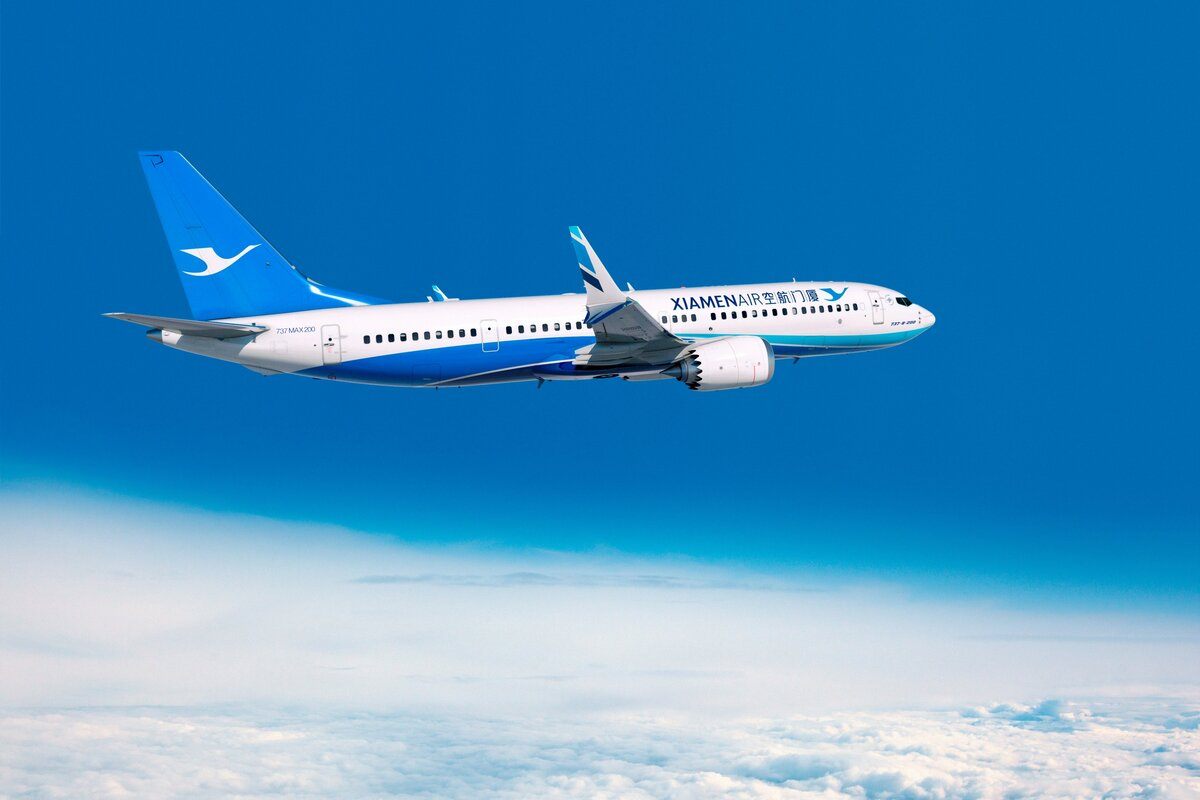



 ${ lang === 'zh' ? '中文': 'ENG' }
${ lang === 'zh' ? '中文': 'ENG' }




 ${ lang === 'zh' ? '中文': 'ENG' }
${ lang === 'zh' ? '中文': 'ENG' }
 ${formatTime('2025-05-02 17:13:35', 2)} ${formatTime('2025-05-02 17:13:35', 3)}, ${formatTime('2025-05-02 17:13:35', 1)}
${formatTime('2025-05-02 17:13:35', 2)} ${formatTime('2025-05-02 17:13:35', 3)}, ${formatTime('2025-05-02 17:13:35', 1)}

referrence: https://aviationsourcenews.com/boeing-737-max-bound-for-xiamen-airlines-returned-amid-u-s-china-tensions/#google_vignette
A Boeing 737 MAX jet originally intended for China’s Xiamen Airlines has returned to the United States amid the intensifying trade conflict between Washington and Beijing. The aircraft, already sporting the livery of the Chinese carrier, landed at Boeing Field in Seattle at 6:11 p.m. on Saturday, following a 5,000-mile return trip that included refueling stops in Guam and Hawaii, according to a Reuters eyewitness.
The jet was one of several 737 MAX planes stationed at Boeing’s completion and delivery center in Zhoushan, China, waiting for final preparations before official handover to Chinese airlines. However, President Donald Trump’s recent decision to hike baseline tariffs on Chinese imports to 145% has triggered strong retaliatory measures from Beijing—including a 125% tariff on U.S.-manufactured goods, such as commercial aircraft.
This escalation effectively prices U.S.-made jets out of the Chinese market, leaving deliveries of new aircraft in jeopardy. With a new Boeing 737 MAX priced at approximately $55 million, such tariffs could add tens of millions to the cost for Chinese buyers. Aviation analysts say many airlines may now opt to defer deliveries or cancel orders altogether to avoid prohibitive import fees.
It remains unclear whether Boeing or Xiamen Airlines initiated the jet’s return to the U.S., as both companies declined to comment. However, the move underscores the fragility of international aerospace trade when caught in the crosshairs of geopolitical conflict.
This incident is the latest disruption for Boeing, which only recently began recovering from a years-long freeze on 737 MAX exports to China due to safety concerns following two fatal crashes in 2018 and 2019. Coupled with earlier trade tensions, this tariff standoff threatens to derail Boeing’s ambitions in what had once been one of its most promising international markets.
Boeing has long relied on China, the world’s second-largest aviation market, for a significant share of its commercial aircraft sales. Its Zhoushan facility, opened in 2018 as a joint venture with COMAC (Commercial Aircraft Corporation of China), was intended to cement its foothold in the region. But with tit-for-tat tariffs now blocking deliveries, the facility’s future role is increasingly uncertain.
Experts liken today’s trade war to historical policy missteps such as the Smoot-Hawley Tariff Act of 1930, which contributed to the Great Depression by igniting global retaliation. CNN analyst Fareed Zakaria recently warned that President Trump’s “politics of nostalgia” is hurting American businesses more than it helps.
With no resolution in sight and more aircraft potentially stuck in limbo, the aerospace industry may be entering a period of prolonged uncertainty. The question now is whether diplomacy can clear the runway before both sides incur even greater economic damage.
References:
Reuters. (2025, April 20). Boeing jet returns to US from China, a victim of Trump’s tariff war.
CNN. (2025, April 20). Fareed Zakaria on Trump's tariffs and U.S. manufacturing.
IBA Aviation Consultancy. (2024). Valuation of 737 MAX aircraft.
CNBC. (2025, April). Boeing shares fall as trade war halts Chinese deliveries.
CNN. (2025). Peter Navarro, Janet Yellen, and Scott Galloway commentaries on tariffs.